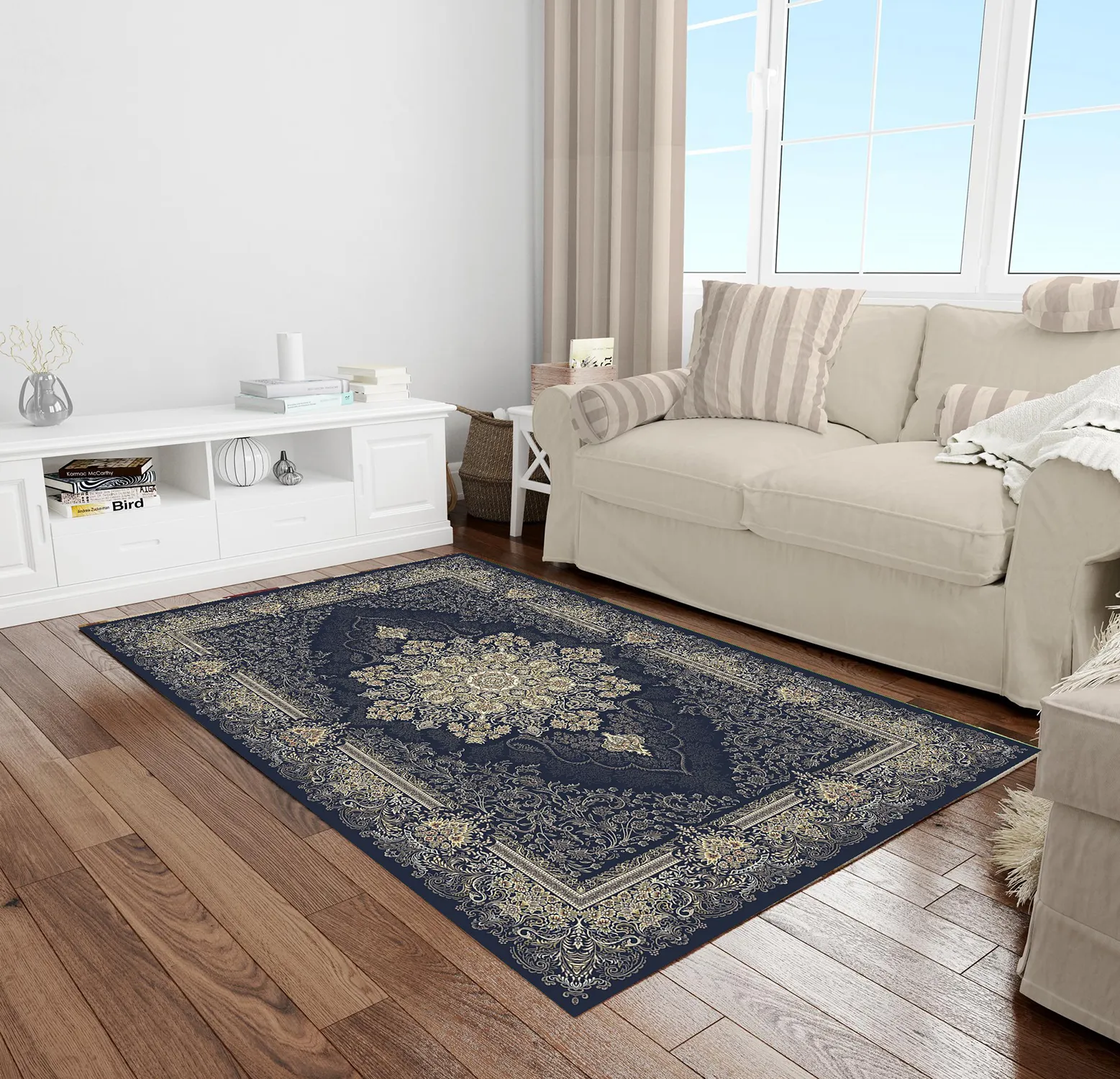Comparison of Natural and Synthetic Carpet Fibers

The most important point when buying a carpet is the type of fibers it’s made of. The quality and material of the carpet fibers are as important as their construction.
Natural Fibers vs. Synthetic Fibers in Carpets
Natural fibers, such as silk, wool, jute, sisal, cotton, and bamboo, come from nature. Synthetic fibers are made using scientific techniques in factories. The production cost of natural fibers and consequently their price is much higher than synthetic fibers.
Types of Natural Fibers:
- Wool: Wool is one of the most common materials used for carpet production for centuries. Wool is very durable, soft, and resistant to stains. Wool carpets are a popular choice for those looking for carpets for long-term use and high-traffic areas.
- Cotton: Cleaning and maintaining carpets woven with cotton is very easy. Cotton carpets are durable and can add an excellent look and texture to your home. Just avoid using them in high-traffic areas as they wear out easily.
- Silk: Silk is the highest quality material used for carpet production and is very shiny and soft. Silk carpets or silk and wool blend carpets are often the most valuable carpets in the market. These carpets are excellent for bedrooms and living rooms.
- Jute, Sisal, and Hemp: These carpets are coarse-woven and do not have the softness and warmth of other natural materials. However, they are an excellent choice for passageways and verandas.
- Bamboo Silk: A suitable alternative to silk, bamboo silk is a sustainable material that can be blended with wool. Silk is the most expensive material for carpet production. Silk carpets will always be among the highest quality carpets in any collection.
Types of Synthetic Fibers
- Nylon: Nylon carpets with elastic and flexible fibers that resist high abrasion without matting are an excellent alternative to natural fibers. Like all synthetic fibers, they are resistant to water and stains, and cleaning them is very easy. However, you may not find the same softness and gentleness in nylon carpets as those made from natural fibers.
- Acrylic: Similar to wool carpets, acrylic carpets also have a good resemblance when sewn properly. They have some features that carpet owners appreciate, such as easy cleaning and reasonable prices. The only thing to be concerned about is the static electricity they generate.
- Polypropylene: If you want to place a carpet in a high-traffic area or outdoors, choose polypropylene carpets with heat-set yarn. These carpets are designed to resemble woolen carpets and have water and stain-resistant properties. They come in handy when dealing with outdoor spaces. Any spills on these carpets are easily cleaned, and maintaining them is very easy. To keep your polypropylene carpets beautiful, you should clean them regularly. Sahand Polypropylene carpets are made of the highest quality Ultra Warp and Ultra Weft yarns and have unparalleled beauty and durability.
- Polyester: The fibers of this type of carpet have a special luster. Due to the characteristics of polyester, they are very soft and evoke a sense of luxury. What makes these carpets popular is that they are easy to clean, resistant to color fading, and cost-effective.

Fading and Fiber Shedding in Carpets
Keep in mind that your brand-new carpet naturally sheds loose fibers as part of the wear process. However, this shedding eventually stops, especially if you vacuum it several times. To deal with any sprouts (long, protruding fibers appearing on the carpet surface), simply trim them with scissors to even out the carpet pile. Over time, carpets exposed to direct sunlight may experience color fading, so it’s recommended to rotate them every six months to minimize this occurrence.
Purpose of Having a Carpet
In addition to its decorative aspect, a carpet has many practical uses. Some carpet fibers prevent the growth of dust mites and bacteria and are therefore naturally stain-resistant.
However, every carpet requires care to maintain its beauty and prevent matting. It is recommended to professionally clean your modern carpet at least once a year. But there are many tasks you can do yourself to keep your carpets looking new.








